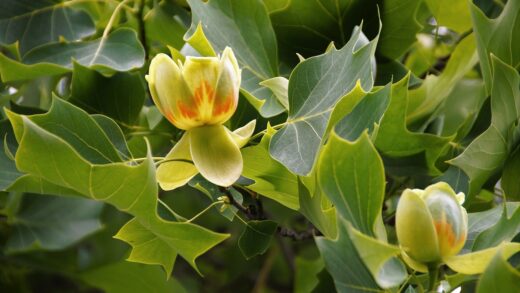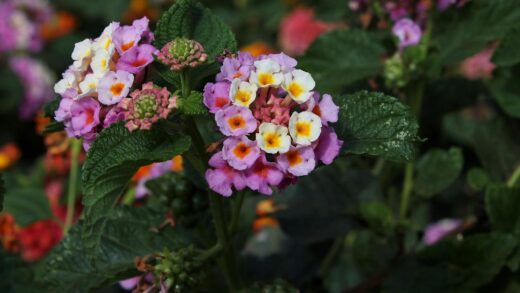Preparing the ideal planting site
The long-term success of an English lavender plant is determined long before the plant is even placed in the ground; it begins with the meticulous preparation of the planting site. This foundational step is arguably the most critical part of the entire process, as it creates the environment in which the lavender’s roots will either thrive or struggle. The two non-negotiable requirements for this plant are full, direct sunlight and exceptionally sharp drainage. You must select a location that receives at least six to eight hours of sun daily, as this is vital for vigorous growth, abundant flowering, and the development of the plant’s characteristic aromatic oils. Anything less will result in a leggy plant with sparse blooms and a lackluster fragrance, so choosing a prime, sun-drenched spot is paramount.
Once you have identified the sunniest spot in your garden, the focus must shift to the soil itself, specifically its ability to drain water away from the plant’s roots. English lavender has an absolute intolerance for waterlogged conditions, which quickly lead to fatal root rot. If your native soil is heavy clay, you must amend it significantly to create a suitable home for lavender. This involves digging a wide planting hole, at least twice the width of the root ball, and incorporating materials that improve porosity and structure. A generous amount of coarse sand, pea gravel, or grit mixed thoroughly into the excavated soil will create the fast-draining medium that lavender craves.
Another key aspect of soil preparation is ensuring the correct pH level. English lavender performs best in soil that is neutral to slightly alkaline, with a pH range ideally between 6.5 and 7.5. Most garden soils tend to be slightly acidic, so conducting a simple pH test is a wise investment. If the test reveals that your soil is too acidic, you can easily adjust it by adding a small amount of garden lime or crushed oyster shells to the soil during preparation. This small adjustment can make a significant difference in the plant’s ability to absorb nutrients and will contribute to its overall vigor and health over the years.
For gardens with particularly problematic, heavy soil or low-lying areas, planting on a mound or in a raised bed is an excellent strategy. By creating a berm of well-draining soil that is six to twelve inches higher than the surrounding ground level, you physically lift the lavender’s root crown, ensuring that water can never pool around its base. This technique guarantees the sharp drainage the plant requires, regardless of the quality of the subsoil. It is a simple yet incredibly effective method for cultivating healthy, long-lived lavender plants in less-than-ideal garden conditions.
The proper technique for planting
With your site fully prepared, the next step is the physical act of planting the English lavender. The best time to plant is typically in the spring, after the danger of the last hard frost has passed, which gives the plant the entire growing season to establish a robust root system before its first winter. When you are ready to plant, dig a hole that is approximately twice as wide as the nursery container but no deeper. It is a common and detrimental mistake to plant lavender too deep, as this can lead to the crown of the plant rotting. The top of the root ball should sit level with, or even slightly above, the surrounding soil surface.
Before placing the plant in the hole, carefully examine its root system. Often, plants that have been in containers for a while can become root-bound, with their roots circling tightly within the pot. If you notice this, it is crucial to gently tease out and loosen the roots with your fingers before planting. This encourages the roots to grow outward into the new soil rather than continuing to circle in on themselves, which would inhibit the plant’s ability to establish itself properly. A plant with a constricted root ball will struggle to access water and nutrients and will be less stable in the ground.
Once the root ball is loosened, place the plant in the center of the hole, making sure the top of the root ball is at the correct height. Begin backfilling the hole with the amended soil you prepared earlier, gently firming it around the roots to eliminate any large air pockets. Do not compact the soil too heavily, as this would counteract your efforts to create a light, airy, and well-draining environment. After the hole is filled, you have the option to add a top dressing of gravel or small stones around the base of the plant, which acts as a mulch that helps keep the crown dry and suppresses weeds.
The final step in the planting process is a thorough and deep watering. This initial watering is essential as it helps to settle the soil around the roots and provides the moisture needed to reduce transplant shock. Water the plant slowly and deeply at its base, allowing the moisture to penetrate the entire root zone. After this initial soaking, you will need to monitor the plant’s water needs carefully during its first season, watering deeply whenever the top few inches of soil become dry. This consistent initial care is vital for helping the plant transition successfully into its new garden home.
Propagation through softwood cuttings
Propagating English lavender from softwood cuttings is an incredibly reliable and satisfying way to create new plants that are genetically identical to the parent. This method is best performed in the late spring or early summer when the plant is actively growing, and its stems are still flexible and green, not yet woody. The ideal cuttings are taken from healthy, non-flowering shoots, as this ensures the cutting’s energy is directed toward root formation rather than bloom production. Look for vigorous new growth and select stems that are about three to four inches long.
To take a cutting, use a sharp, sterilized knife or pair of secateurs to make a clean cut just below a leaf node, which is the small bump on the stem where leaves emerge. Once you have your cutting, gently strip the leaves from the lower two-thirds of the stem. This is important because any leaves left below the soil surface would rot, potentially causing the entire cutting to fail. You can then, if you wish, dip the bare end of the cutting into a rooting hormone powder, which can help to stimulate faster and more robust root development, although lavender often roots well without it.
Prepare a small pot or a tray filled with a sterile, well-draining rooting medium. A mixture of equal parts perlite and peat moss or a specialized seed-starting mix works perfectly for this purpose. Use a pencil or a dibber to create a small hole in the medium, and then gently insert the prepared cutting, ensuring that the stripped portion of the stem is fully submerged. Firm the medium lightly around the cutting to hold it in place. You can fit several cuttings into a single pot, as long as their leaves are not touching, which could trap moisture and lead to fungal issues.
To create the humid environment that encourages rooting, you can cover the pot with a clear plastic bag or the top half of a plastic bottle, ensuring it doesn’t touch the cuttings. Place the pot in a location that receives bright, indirect light, as direct sun can scorch the delicate cuttings. Keep the rooting medium consistently moist but not waterlogged. In about four to six weeks, the cuttings should develop a healthy root system. You can test for this by giving a gentle tug on a cutting; if you feel resistance, roots have formed, and your new lavender plant is ready to be potted up individually.
Growing from seed
Growing English lavender from seed is a rewarding, albeit more time-consuming, method of propagation that allows you to produce a large number of plants very economically. It’s important to know that seeds collected from hybrid lavender varieties may not grow true to the parent plant, but for species lavender, it’s a perfectly viable approach. Lavender seeds have a reputation for being somewhat slow and erratic to germinate, but their success rate can be greatly improved by a process called cold stratification. This involves exposing the seeds to a period of cold, moist conditions, which mimics the natural winter period they would experience outdoors and breaks their dormancy.
To stratify the seeds, you can mix them with a small amount of damp sand or vermiculite, place the mixture in a sealed plastic bag, and store it in the refrigerator for three to six weeks. After the cold treatment, you can sow the seeds in a tray or small pots filled with a sterile, fine-textured seed-starting mix. Lightly press the seeds onto the surface of the soil, and then cover them with a very thin layer of fine grit or vermiculite, as they need some light to germinate effectively.
Carefully water the tray from the bottom by placing it in a shallow pan of water until the surface of the soil is moist, or use a fine mist sprayer to water from above without dislodging the seeds. To maintain the necessary humidity for germination, cover the seed tray with a clear plastic dome or a sheet of plastic wrap. Place the tray in a warm location that receives plenty of bright, indirect light. A spot on a sunny windowsill or under grow lights is ideal for this stage.
Patience is key when waiting for lavender seeds to sprout, as germination can take anywhere from two weeks to over a month, even with stratification. During this time, it’s crucial to keep the soil consistently moist but never soggy. Once the seedlings emerge and have developed their first set of true leaves, you can remove the plastic cover to improve air circulation. When the seedlings are large enough to handle, they can be carefully transplanted into their own individual small pots to continue growing until they are strong enough to be planted out in the garden after the last frost.




















